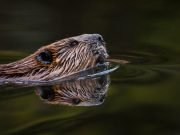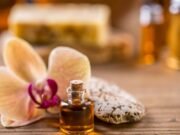Where Does Vanilla Flavouring Come From? The Dark Truths Of Flavour
Everyone in the modern world is aware of vanilla’s sweet, yet gentle tones – and yet, not many people actually know of the source of tastes which is used in artificial vanilla especially. Although rather surprising, not many companies will be upfront about all the ingredients which go in the little bottles of delicately tasting artificial vanilla flavouring.
Origins Of Vanilla – From The Nether
Although 100% natural vanilla extract comes from fairly obvious and – mostly – respectable sources, artificial vanilla flavouring has a completely different story when compared to its fully organic counterpart – and the difference itself is rather surprising overall.
Castoreum is a chemical compound that comes from a beaver’s castor sacs – which can coincidentally be found embarrassingly near a beaver’s nether regions. Due to the glands’ close proximity to the less desirable ends of the digestive system, the excretions themselves are often a mixture of many different substances – most of which include the actual castor gland secretions, anal gland secretions, as well as urine.
Although rather disgusting, this particular compound has been used in many wonderful-smelling things – many of which include perfumes as well as foods – for about 80 years now.
Castoreum – To Stink Or Not To Stink
Contrary to popular belief, not everything that comes from the lower regions of the body stinks in all cases – sometimes the odour which pours out just so happens to be uncannily similar to the smell of vanilla.
This is exactly the case with the secretions of a beaver’s castor sacs. Many manufacturers are able to and tend to happily use this compound in many of their products, because the FDA (the U.S Food and Drug Administration) deems the compound itself as “generally safe” to use and ingest, regardless of its original source.
The way that castoreum is produced doesn’t exactly concern manufacturers, however; if it doesn’t have a massive impact on public health, then why care? Although artificial vanilla can have nastier sources (such as cow excrement), it can also have way better sources, many of which include clove oil, pine bark, and wood pulp waste – although the last one has fallen out of most manufacturers’ favour nowadays. At this point, it is merely a problem of how much the manufacturing process actually costs, as well as the availability of the ingredients.
While the extract of castoreum isn’t exactly easy or pleasant to do, manufacturers of artificial vanilla flavouring still see it as good enough to be added to their products – even if it involves anaesthetizing a beaver and then proceeding to milk its nethers for the vanilla-smelling compound.
At the end of the day, the secretions from a beaver’s castor glands just happen to be more convenient to choose when it comes to the making of artificial vanilla flavouring – and the fact that manufacturers can just list it as an ambiguous “natural flavouring” can also raise some concerns about not knowing what is used in the extracts your nan uses in her delicious homemade cakes.




















